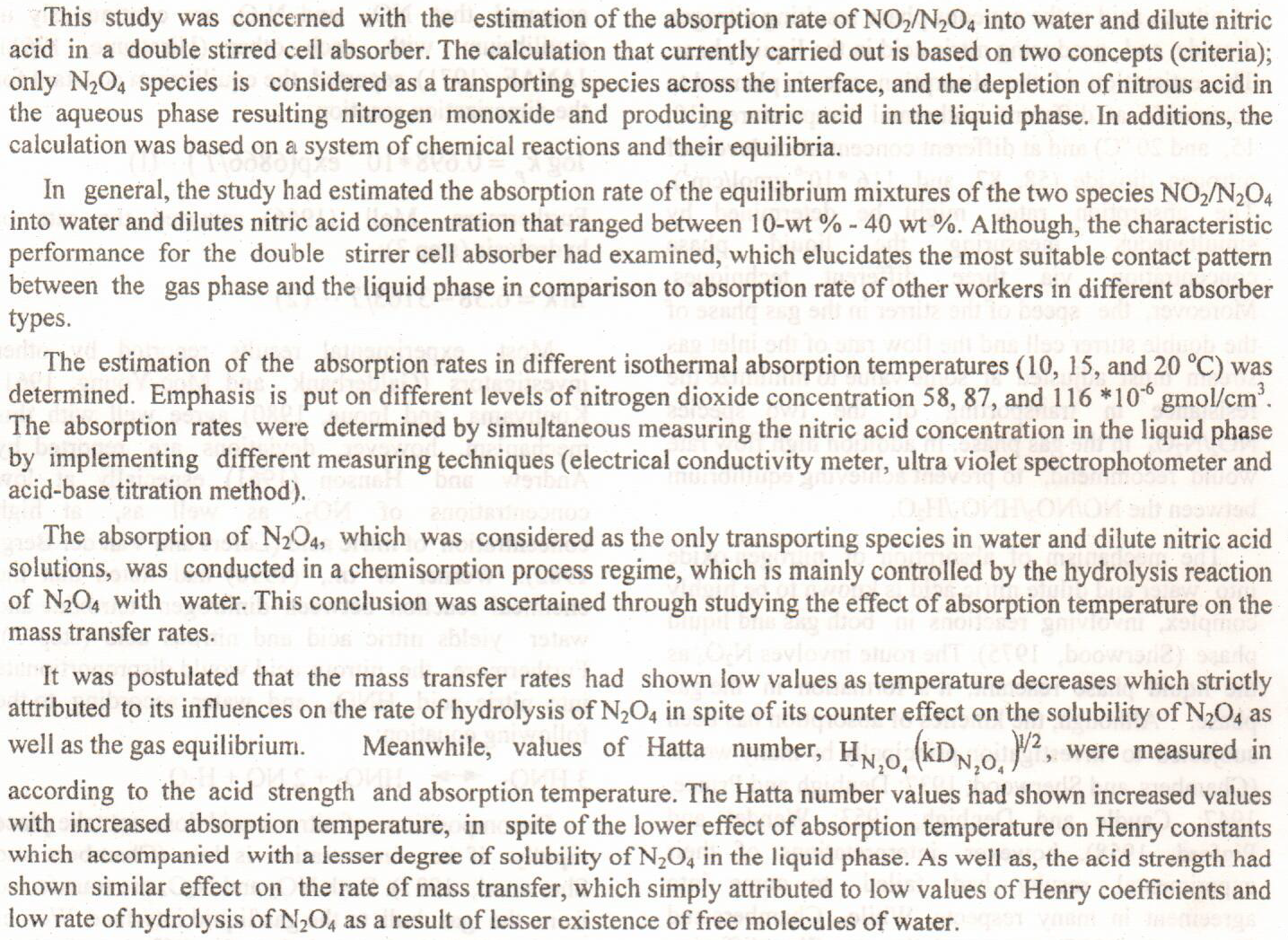
 (3)
(3)
 (3)
(3)
Recycling process presents a sustainable pavement by using the old materials that could be milled, mixed with virgin materials and recycling agents to produce recycled mixtures. The objective of this study is to evaluate the impact of water on recycled asphalt concrete mixtures, and the effect of the inclusion of old materials into recycled mixtures on the resistance of water damage. A total of 54 Marshall Specimens and 54 compressive strength specimens of (virgin, recycled, and aged asphalt concrete mixtures) had been prepared, and subjected to Tensile Strength Ratio test, and Index of Retained Strength test. Four types of recycling agents (used oil, oil + crumb rubber, soft grade asphalt cement, and asphalt cement + Su
... Show More (17)
(17)
The implementation of nanotechnology in all industries is one of most significant research fields. Nanoparticles have shown a promising application in subsurface fields. On the other hand, various surfactants have been used in the oil industry to reduce oil/water interfacial tension and also widely used to stabilize the nano-suspensions. The primary objective of this study was to investigate the improvements of surfactants ability in term of interfacial tension (γ) reduction utilizing addition of silicon dioxide nanoparticles at different temperatures and salinity. The pendant drop technique has been used to measure γ and electrical conductivity has been used to measure the critical micelle concentration (CMC). The synergistic effects of
... Show More (45)
(45)
 (51)
(51)
In this study, biodiesel was prepared from chicken fat via a transesterification reaction using Mussel shells as a catalyst. Pretreatment of chicken fat was carried out using non‐catalytic esterification to reduce the free fatty acid content from 36.28 to 0.96 mg KOH/g oil using an ethanol/ fat mole ratio equal to 115:1. In the transesterification reaction, the studied variables were methanol: oil mole ratio in the range of (6:1 ‐ 30:1), catalyst loading in the range of (9‐15) wt%, reaction temperature (55‐75 °C), and reaction time (1‐7) h. The heterogeneous alkaline catalyst was greenly synthesized from waste mussel shells throughout a calcin
... Show More (6)
(6)
 (4)
(4)
In this study, biodiesel was prepared from chicken fat via a transesterification reaction using Mussel shells as a catalyst. Pretreatment of chicken fat was carried out using non‐catalytic esterification to reduce the free fatty acid content from 36.28 to 0.96 mg KOH/g oil using an ethanol/ fat mole ratio equal to 115:1. In the transesterification reaction, the studied variables were methanol: oil mole ratio in the range of (6:1 ‐ 30:1), catalyst loading in the range of (9‐15) wt%, reaction temperature (55‐75 °C), and reaction time (1‐7) h. The heterogeneous alkaline catalyst was greenly synthesized from waste mussel shells throughout a calcin
... Show More (6)
(6)
 (4)
(4)
 (4)
(4)
 (2)
(2)
Mixed ligand complexes of bivalent metal ions, viz; Co(II), Ni(II), Cu(II) and Zn(II) of the composition [M(A)2((PBu3)2]in(1:2:2)(M:A:(PBu3). molar ratio, (where A- Anthranilate ion ,(PBu3)= tributylphosphine. M= Co(II),Ni(II),Cu(II) and Zn(II). The prepared complexes were characterized using flame atomic absorption, by FT-IR, UV/visible spectra methods as well as magnetic susceptibility and conductivity measurements. The metal complexes were tested in vitro against three types of pathogenic bacteria microorganisms: (Staphylococcus, Klebsiella SPP .and Bacillas)to assess their antimicrobial properties. Results. The study shows that all complexes have octahedral geometry; in addition, it has high activity against tested bacteria. Based on th
... Show MoreMixed ligand complexes of bivalent metal ions, viz; Co(II), Ni(II), Cu(II) and Zn(II) of the composition [M(A)2((PBu3)2]in(1:2:2)(M:A:(PBu3). molar ratio, (where A- Anthranilate ion ,(PBu3)= tributylphosphine. M= Co(II),Ni(II),Cu(II) and Zn(II). The prepared complexes were characterized using flame atomic absorption, by FT-IR, UV/visible spectra methods as well as magnetic susceptibility and conductivity measurements. The metal complexes were tested in vitro against three types of pathogenic bacteria microorganisms: (Staphylococcus, Klebsiella SPP .and Bacillas)to assess their antimicrobial properties. Results. The study shows that all complexes have octahedral geometry; in addition, it has high activity against tested bacteria. Based on th
... Show More